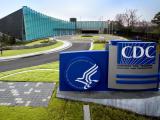Today two studies in Morbidity and Mortality Weekly Report describe patterns of COVID-19 outpatient therapy by race and social vulnerability, one finding persistent racial disparities in Paxlovid prescribing through July 2022, and the other showing more equitable dispensing of two antivirals by ZIP code after implementation of a US Department of Health and Human Services (HHS) program.
White patients at front of Paxlovid line
The Centers for Disease Control and Prevention (CDC) COVID-19 Emergency Response Team led the first study, which used electronic health record data from 692,580 COVID-19 patients 20 years and older at 30 sites to assess the prescribing patterns of four COVID-19 drugs to patients by race from January to July 2022. Of all patients, 22.2% were 65 years and older, 60.5% were women, 68.2% were White, and 79.6% were non-Hispanic.
The drugs included the oral antiviral drugs nirmatrelvir/ritonavir (Paxlovid) and molnupiravir (Lagevrio), the intravenous antiviral remdesivir (Veklury), and the monoclonal antibody bebtelovimab.
The overall percentage of COVID-19 patients treated with Paxlovid was 11.7%, rising from 0.6% in January to 20.2% in April to 34.3% in July. Molnupiravir, remdesivir, and bebtelovimab were used far less often, at 1.0%, 0.7%, and 2.7%, respectively, and their prescribing varied little over time (range, 0.4% to 5.0%).
The proportion treated with Paxlovid surpassed 11.7% for patients aged 50 and older and those who were White, non-Hispanic, undergoing cancer treatment, and taking corticosteroids or immunosuppressive drugs, and those who had underlying medical conditions, except chronic kidney disease, cirrhosis, congestive heart failure, and dementia. Bebtelovimab was used more often than Paxlovid in patients with an organ transplant.
Early access critical
Regardless of age-group or immune status, from April to July, the proportion prescribed Paxlovid was lower among Black (-35.8%), mixed or other race (-24.9%), Asian (-19.4%), and Alaska Native, Native Hawaiian, and Pacific Islander (AIAN/NHOPI; -23.1%) patients than among their White peers. Hispanic patients were 29.9% less likely to receive Paxlovid than non-Hispanic patients.
Racial-minority patients were given bebtelovimab and molnupiravir less often than their White and non-Hispanic counterparts. While AIAN/NHOPI, Asian, and Hispanic patients received remdesivir less often than White and non-Hispanic patients, Black patients received the drug more often than White patients. Among those with impaired immunity, Black, mixed or other race, and Hispanic patients were prescribed Paxlovid and monoclonal antibodies less often than their White counterparts.
Racial disparities in Paxlovid prescribing were slightly higher among high-risk patients such as those aged 50 years and older and those with compromised immune systems. The proportion of patients aged 20 to 49, 50 to 64, 65 to 79, and 80 years and older given Paxlovid was 20.9%, 34.3%, 39.9%, and 30.7%, respectively. The largest relative difference (44.0%) was between Black and White patients aged 65 to 79.
The researchers said the reasons behind the disparities may include structural racism, distrust of the medical system, limited access to transportation, language barriers, less access to the technology needed for telemedicine services, limited knowledge of COVID-19 treatment options, and less access to healthcare. "Limited access to treatment is particularly detrimental when patients need timely services, as is required for COVID-19 medications that must be initiated soon after symptom onset," they wrote.
The team recommended prioritizing drug distribution to and raising awareness about treatment options among disproportionately affected groups, as well as implementing communication campaigns using trusted messengers.
"Early access to effective COVID-19 treatments and staying up to date with COVID-19 vaccination, including use of updated bivalent boosters, are critical components of the public health response to the pandemic, especially for protecting persons most at risk for severe illness," the authors concluded.
More equitable distribution after program
In the second study, a team led by HHS researchers and the CDC COVID-19 Emergency Response team assessed the prescribing patterns of Paxlovid and molnupiravir by week and ZIP code–level social vulnerability before and after the implementation of an equitable-dispensing program, from Dec 23, 2021, to Aug 28, 2022.
Using its Health Partner Ordering Portal, HHS gives the two antivirals for free to healthcare providers across the United States, the Federal Retail Pharmacy Therapeutics Program, and federal agencies such as the Indian Health Service, the Federal Bureau of Prisons, and the US Department of Defense.
The HHS program was instituted after data collected from healthcare provider sites at least twice a week from Dec 23, 2021, to May 21, 2022, showed substantial dispensing disparities among areas with high social vulnerability compared with less-vulnerable zones.
The intervention involved education and enhanced awareness, including COVID-19 drug teleprescribing programs, mobile test-to-treat sites, positioning of oral antivirals at provider sites in high-vulnerability areas, and increased distribution to federally qualified health centers.
"These efforts were designed to reduce barriers to access by making it easier to satisfy the requirements necessary to receive a clinical assessment to obtain a prescription and begin oral antiviral medication within 5 days of symptom onset," the researchers wrote.
The antivirals were given to 122 out of 100,000 residents in high-vulnerability ZIP codes (19% of population-adjusted dispensing), compared with 247 of 100,000 (42%) in medium-vulnerability and 274 of 100,000 (39%) in low-vulnerability areas, increases of 159%, 48%, and 21%, respectively.
Overall prescribing of Paxlovid and molnupiravir rose 57%, from 643/100,000 from Apr 24 to May 21, 2022, to 1,012/100,000 from Jul 31 to Aug 28. Relative to the earlier period, antiviral prescribing rose in the later period to 315/100,000 (31% of population-adjusted rates) in high-vulnerability areas, 367/100,000 (36%) in medium-vulnerability zones, and 331/100,000 (33%) in low-vulnerability ZIP codes.
"These data indicate a narrowing of the dispensing gap among high-vulnerability and medium-and low-vulnerability zip codes; at the same time, overall dispensing increased," the authors wrote.
They said the HHS program is the largest such distribution of antivirals, with roughly 16 million COVID-19 treatment courses delivered through August. "Ensuring equitable access to antivirals is essential to improving patient outcomes," they wrote.


















